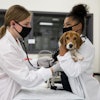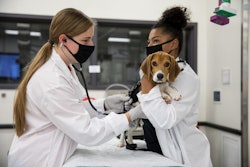In terms of postsecondary degree completion, the science, technology, engineering, and mathematics (STEM) landscape largely resembles American higher education on the whole. Despite more low-income students and underrepresented minorities seeking and completing STEM degrees, there remains great inequity between these groups and the country’s majority middle- and upper-income populations.
In addition to racial/ethnic and socioeconomic classification, the dividing lines of inequity can also be drawn by geographical region.
A recent report by the Brookings Institution Metropolitan Policy Program sheds comprehensive light on the current condition of America’s population centers by way of immigration, migration, households, and workforce (in addition to more traditional measures like race/ethnicity).
Although not addressing the STEM education pipeline in particular, State of Metropolitan America: On the Front Lines of Demographic Transformation, speaks to social, educational, and industry settings in cities across the country—regions also home to potential generations of diverse STEM professionals. The report both confirms often discussed data on growing population centers while also pulling back the curtain on areas that lie beyond the country’s borders and inner-cities.
According to the report, the greatest growth of Asian and Hispanic groups—the fastest growing racial/ethnic populations—between the years 2000 and 2008 occurred in just 10 metropolitan areas. These groups are also moving away from previous geographical strongholds and into metropolitan suburbs in unprecedented numbers.
In short, the country’s populace landscape continues to change, thus necessitating a parallel change in the way researchers, policymakers, and practitioners approach STEM education and workforce advancement. Particularly when it concerns just where and when diverse students enter STEM higher education.
Fortunately, positive change is occurring at the local level. Federal agencies and philanthropies that focus on K-20 STEM outreach often utilize a community-based model. Such efforts focus on high-need school districts where science laboratories are in dire shape or are non-existent and where a lack of STEM role models is great. Such endeavors foster linkages between two- and four-year institutions, supported by both local industry and community leadership.















